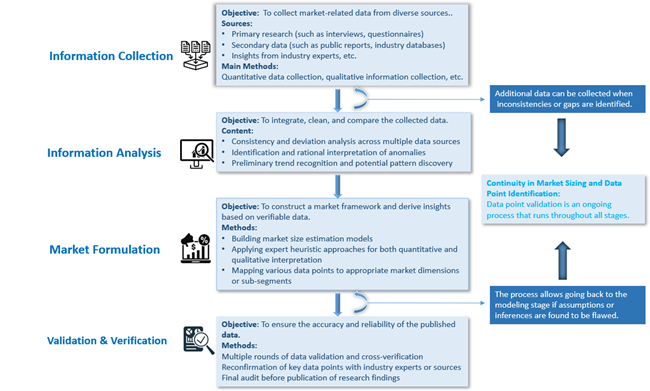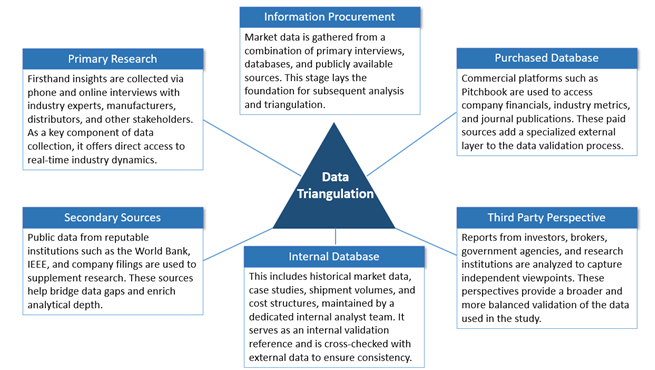Definition and Scope:
The global
fiber array market is entering a period of accelerated transformation, driven
by structural shifts in data infrastructure, technological integration, and
end-user diversification. As the digital economy flourishes, the expansion of
hyperscale data centers—fueled by growing demands for artificial intelligence
(AI), cloud computing, and high-performance computing (HPC)—is pushing the
industry toward high-bandwidth, low-latency interconnects. This trend has
spurred the adoption of co-packaged optics (CPO) and silicon photonics, both of
which fundamentally rely on compact, high-channel-count fiber arrays. To meet
this demand, the market is rapidly evolving toward 16-, 32-, and 64-channel
configurations, with two-dimensional (2D) fiber array architectures emerging to
deliver superior spatial density and signal integrity. Meanwhile, the rise of
automated assembly—driven by machine vision and precision robotics—is reshaping
production methods to accommodate higher output and tighter tolerances.
In 2024, the
global fiber array market reached approximately USD 461.33 million and is
expected to grow at a CAGR of 11.89% from 2025 to 2033, reaching USD 1,231.64
million by 2033. This growth is propelled by a convergence of technological,
infrastructural, and policy forces that are reshaping the communications
landscape. The rapid global deployment of 5G networks and the explosive
expansion of data centers—driven by AI, cloud services, and ultra-high-speed
transmission—are significantly increasing the demand for high-density,
high-bandwidth optical interconnects, where fiber arrays are essential.
Simultaneously, large-scale Fiber to the Home (FTTH) deployments in both
developed and emerging markets are expanding the application of Fiber Array
Units (FAUs) in access networks, where ease of installation and modular design
are critical. Advances in fiber alignment, coupling, and next-generation fiber
types are pushing the performance boundaries of FAUs, enabling applications in
emerging fields like quantum computing and LiDAR. Furthermore, government
policies and funding initiatives—such as the U.S. “Internet for All” program
and similar strategies in the EU, China, and Japan—are positioning fiber
networks as a top priority in national digital infrastructure agendas,
reinforcing the market’s long-term momentum.
This report offers a comprehensive analysis of the global Fiber Arrays market, examining all key dimensions. It provides both a macro-level overview and micro-level market details, including market size, trends, competitive landscape, niche segments, growth drivers, and key challenges.
Report Framework and Key Highlights:
Market Dynamics: Identification of major market drivers, restraints, opportunities, and challenges.
Trend Analysis: Examination of ongoing and emerging trends impacting the market.
Competitive Landscape: Detailed profiles and market positioning of major players, including market share, operational status, product offerings, and strategic developments.
Strategic Analysis Tools: SWOT Analysis, Porter’s Five Forces Analysis, PEST Analysis, Value Chain Analysis
Market Segmentation: By type, application, region, and end-user industry.
Forecasting and Growth Projections: In-depth revenue forecasts and CAGR analysis through 2033.
This report equips readers with critical insights to navigate competitive dynamics and develop effective strategies. Whether assessing a new market entry or refining existing strategies, the report serves as a valuable tool for:
Industry players
Investors
Researchers
Consultants
Business strategists
And all stakeholders with an interest or investment in the Fiber Arrays market.
Global Fiber Arrays Market: Segmentation Analysis and Strategic Insights
This section of the report provides an in-depth segmentation analysis of the global Fiber Arrays market. The market is segmented based on region (country), manufacturer, product type, and application. Segmentation enables a more precise understanding of market dynamics and facilitates targeted strategies across product development, marketing, and sales.
By breaking the market into meaningful subsets, stakeholders can better tailor their offerings to the specific needs of each segment—enhancing competitiveness and improving return on investment.
Global Fiber Arrays Market: Market Segmentation Analysis
The research report includes specific segments by region (country), manufacturers, Type, and Application. Market segmentation creates subsets of a market based on product type, end-user or application, Geographic, and other factors. By understanding the market segments, the decision-maker can leverage this targeting in the product, sales, and marketing strategies. Market segments can power your product development cycles by informing how you create product offerings for different segments.
Key Companies Profiled
CorningCorning
TFC Optical Communication
Kohoku Kogyo
Molex
Sumitomo Electric
Broadex Technologies
SEIKOH GIKEN
Kawashima Manufacturing
Advanced Fiber Resources (Vlink)
Guanghong Technology
ONE Technology Ltd.
Browave Corporation
Orbray Co., Ltd
PHIX Photonics Assembly
Zhongshan Meisu Technology Co.,Ltd
SQS Vlaknova optika as
OZ Optics Limited
HYC
Agilecom Photonics Solutions
Wuhan Yilut Technology
Shijia Photons
Neptec
Fiberwe
IDlL Fibres Optiques
Fibertech Optica
Market Segmentation by Type
2-channel
4-channel
8-channel
12-channel
16-channel
24-channel
32-channel
48-channel
64-channel
Others
Market Segmentation by Application
Planar Lightwave Circuits Devices (PLC)
Array Waveguide Grating (AWG)
Arrayed Active and Passive Fiber Devices
MEMS Devices
Multi-Channel Micro-optics Modules
Others
Geographic Segmentation
North America: United States, Canada, Mexico
Europe: Germany, France, Italy, U.K., Spain, Sweden, Denmark, Netherlands, Switzerland, Belgium, Russia.
Asia-Pacific: China, Japan, South Korea, India, Australia, Indonesia, Malaysia, Philippines, Singapore, Thailand
South America: Brazil, Argentina, Colombia.
Middle East and Africa (MEA): Saudi Arabia, United Arab Emirates, Egypt, Nigeria, South Africa, Rest of MEA
Report Framework and Chapter Summary
Chapter 1: Report Scope and Market Definition
This chapter outlines the statistical boundaries and scope of the report. It defines the segmentation standards used throughout the study, including criteria for dividing the market by region, product type, application, and other relevant dimensions. It establishes the foundational definitions and classifications that guide the rest of the analysis.
Chapter 2: Executive Summary
This chapter presents a concise summary of the market’s current status and future outlook across different segments—by geography, product type, and application. It includes key metrics such as market size, growth trends, and development potential for each segment. The chapter offers a high-level overview of the Fiber Arrays Market, highlighting its evolution over the short, medium, and long term.
Chapter 3: Market Dynamics and Policy Environment
This chapter explores the latest developments in the market, identifying key growth drivers, restraints, challenges, and risks faced by industry participants. It also includes an analysis of the policy and regulatory landscape affecting the market, providing insight into how external factors may shape future performance.
Chapter 4: Competitive Landscape
This chapter provides a detailed assessment of the market's competitive environment. It covers market share, production capacity, output, pricing trends, and strategic developments such as mergers, acquisitions, and expansion plans of leading players. This analysis offers a comprehensive view of the positioning and performance of top competitors.
Chapters 5–10: Regional Market Analysis
These chapters offer in-depth, quantitative evaluations of market size and growth potential across major regions and countries. Each chapter assesses regional consumption patterns, market dynamics, development prospects, and available capacity. The analysis helps readers understand geographical differences and opportunities in global markets.
Chapter 11: Market Segmentation by Product Type
This chapter examines the market based on product type, analyzing the size, growth trends, and potential of each segment. It helps stakeholders identify underexplored or high-potential product categories—often referred to as “blue ocean” opportunities.
Chapter 12: Market Segmentation by Application
This chapter analyzes the market based on application fields, providing insights into the scale and future development of each application segment. It supports readers in identifying high-growth areas across downstream markets.
Chapter 13: Company Profiles
This chapter presents comprehensive profiles of leading companies operating in the market. For each company, it details sales revenue, volume, pricing, gross profit margin, market share, product offerings, and recent strategic developments. This section offers valuable insight into corporate performance and strategy.
Chapter 14: Industry Chain and Value Chain Analysis
This chapter explores the full industry chain, from upstream raw material suppliers to downstream application sectors. It includes a value chain analysis that highlights the interconnections and dependencies across various parts of the ecosystem.
Chapter 15: Key Findings and Conclusions
The final chapter summarizes the main takeaways from the report, presenting the core conclusions, strategic recommendations, and implications for stakeholders. It encapsulates the insights drawn from all previous chapters.






